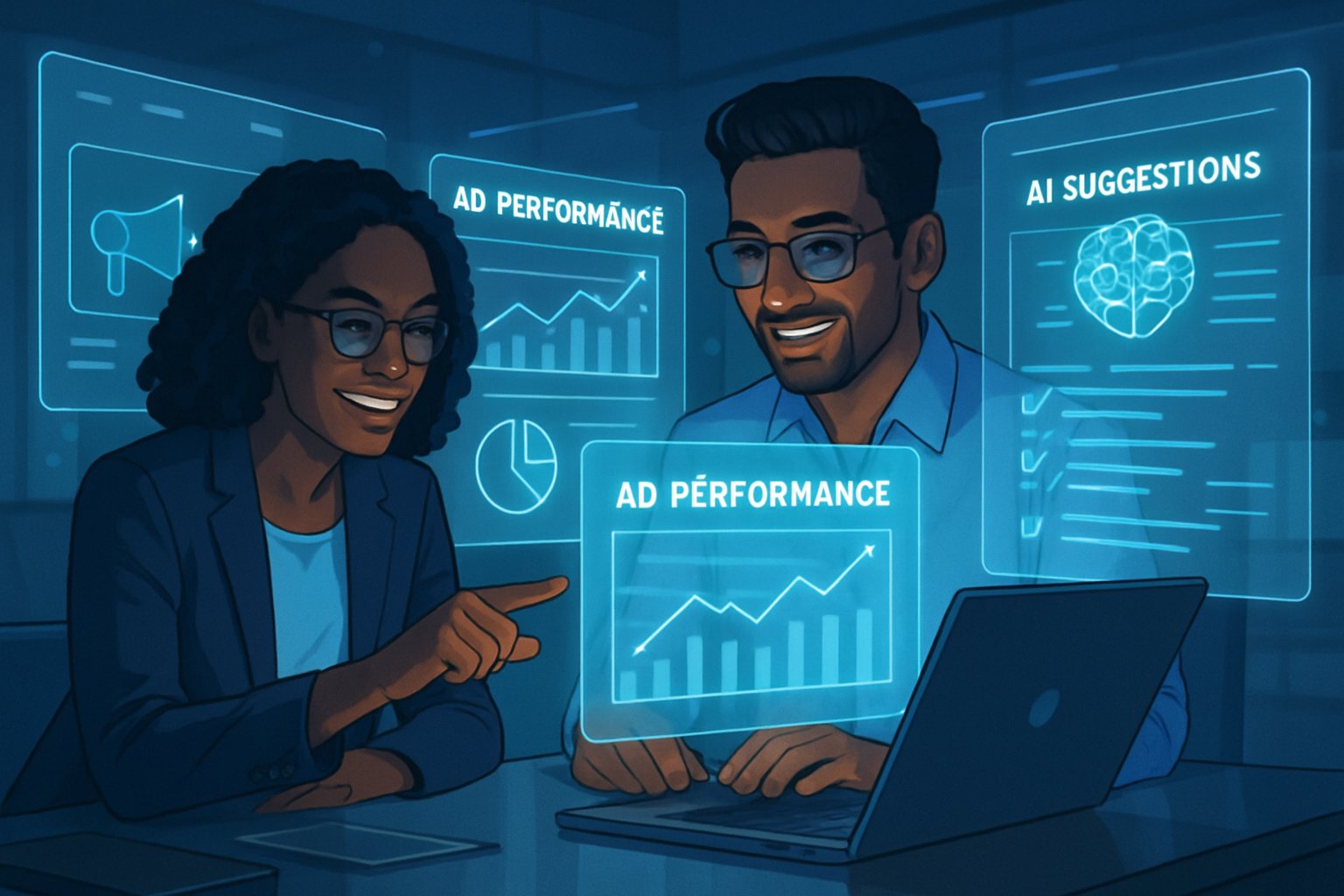
AI CERTS
4 hours ago
Advertising AI: Unlocking 58% ROI With Smart Bid Optimization
Finally, we conclude with clear next steps for marketing teams chasing sustainable performance. Consequently, professionals gain a balanced view instead of blind faith in automation. Move beyond the headline percentage and explore the mechanics that truly drive or destroy value. Moreover, the piece aligns with IAB forecasts that position automation as a top growth lever. Nevertheless, recent academic studies reveal attribution errors that can exaggerate automated bidding payoffs. Understanding both perspectives prepares decision makers for smarter investment in the months ahead.
Rising Ad Spend Trend
Global digital ad revenue hit $258.6 billion in 2024, a 14.9% jump, according to IAB. Therefore, budgets continue shifting toward channels where machine learning can unlock incremental conversions at scale. Google reports that more than 80% of advertisers now rely on automated bidding within its ecosystem. Meanwhile, Meta, Amazon, and Snap push similar algorithmic levers, embedding AI deeper into everyday management. Consequently, marketers allocate larger shares of spend to automated systems, hoping to capture rising auction complexity. Advertising AI sits at the center of this investment wave, promising faster decisions than any human trader. These adoption figures establish a critical backdrop. However, performance claims still demand closer scrutiny. That scrutiny begins with high-profile case studies.

Advertising AI Performance Gains
Vendor materials love headline numbers, and the famous 58% uplift illustrates that tendency. Google’s DOM.RIA story touts 58% more conversions alongside a 44% lower cost per conversion. For tech vendors, Advertising AI offers a differentiator that secures ad budgets during economic uncertainty. In contrast, Snapchat cites Panini America gaining a 58% lower CPA after enabling automated install bidding. Havas and Search Ads 360 echo success, reporting 120% more conversions and a 58% CPA improvement for retail clients. However, each example reflects one campaign, one attribution model, and one timeframe, not industry-wide causality. Nevertheless, such stories shape perception, fueling boardroom appetite for Advertising AI experimentation. These case studies reveal big potential yet limited external validation. Consequently, readers should verify uplift claims before scaling spend. Quantitative adoption figures provide additional context.
Platform Adoption Numbers Climb
Google states over 80% of advertisers now use Smart Bidding, its flagship automated suite. Furthermore, internal Google analyses suggest 20% more conversions at similar costs when broad match pairs with automation. Meta has reported similar migration patterns, while The Trade Desk promotes auction-time bidding as table stakes. Programmatic Advertising spending therefore benefits, because algorithmic bidding thrives on real-time exchanges and massive signal pools. Industry analysts argue the tipping point has passed; manual bid tables can no longer keep pace. Advertising AI adoption appears mainstream, yet maturity levels vary across verticals and campaign objectives. Strong uptake validates market momentum. However, measurement rigor determines whether momentum translates into durable profit. That rigor rests on trustworthy attribution methods.
Measurement Caveats Explained Clearly
Academic work from Gordon, Moakler, and Zettelmeyer tested 663 Facebook experiments. They found non-experimental models often misestimated true lift, sometimes by enormous margins. Consequently, marketers relying solely on platform dashboards risk optimizing toward illusory gains. In contrast, randomized controlled tests isolate causal impact and reveal hidden cannibalization or over-reporting. Moreover, attribution models influence automated bidding because the algorithm chases whatever events receive credit. Advertising AI therefore requires clean tracking, validated conversions, and periodic incrementality tests to remain trustworthy. Ignoring these caveats invites budget waste. Subsequently, marketers need structured playbooks for safer execution.
Practical Optimization Playbook Guide
Start with clear goals, such as target CPA or ROAS, before activating any Optimization strategy. Next, feed high-quality conversion events and exclude low-value leads to help algorithms learn meaningful patterns. Properly tuned Advertising AI thrives on robust outcome data. Programmatic Advertising platforms reward signal density; upload offline conversions and product feeds whenever possible. Additionally, stagger budget increases to avoid shocking learning systems, especially during seasonality shifts. For search, pair broad match with Smart Bidding, yet monitor query reports for brand cannibalization. Meanwhile, deploy auction-time scripts to verify that bid recommendations align with business margins. Advertising AI can excel when humans supervise guardrails, such as minimum ROAS thresholds and negative keyword blocks. Professionals can deepen skills through the AI Marketing Professional™ certification.
- Audit tracking pixels and offline imports
- Run 14-day A/B tests before full rollout
- Layer first-party audiences for richer signals
- Set clear guardrail KPIs and review weekly
These actions ground Optimization in verified data. Consequently, teams gain confidence before scaling spend aggressively. With execution covered, attention shifts to the road ahead.
Future Landscape Predictions Ahead
IAB forecasts list AI-driven automation as a defining 2025 advertising trend. Moreover, privacy regulations will push platforms toward durable, aggregated signals rather than individual identifiers. Consequently, algorithms must infer intent from contextual data, making creative quality even more critical. Programmatic Advertising will converge with retail media, opening new real-time bidding venues across commerce sites. Meanwhile, open-source Optimization libraries are emerging, enabling in-house teams to experiment beyond walled gardens. Advertising AI will therefore evolve from tactical bid setting to holistic media planning across all channels. These shifts promise richer possibilities yet greater complexity. Consequently, continuous education remains the safest hedge.
Advertising AI has moved from buzzword to mainstream practice. Vendor case studies display stunning ROI, yet their contexts remain narrow. Industry data confirms widespread adoption, while academics counsel caution regarding measurement error. Therefore, balanced strategies blend rigorous testing, transparent metrics, and disciplined Optimization steps. Programmatic Advertising will keep expanding, making algorithm literacy indispensable for leadership roles. Moreover, professionals can future-proof careers through the AI Marketing Professional™ certification. Act now, refine your data, and let automation work for—not against—your growth goals.



